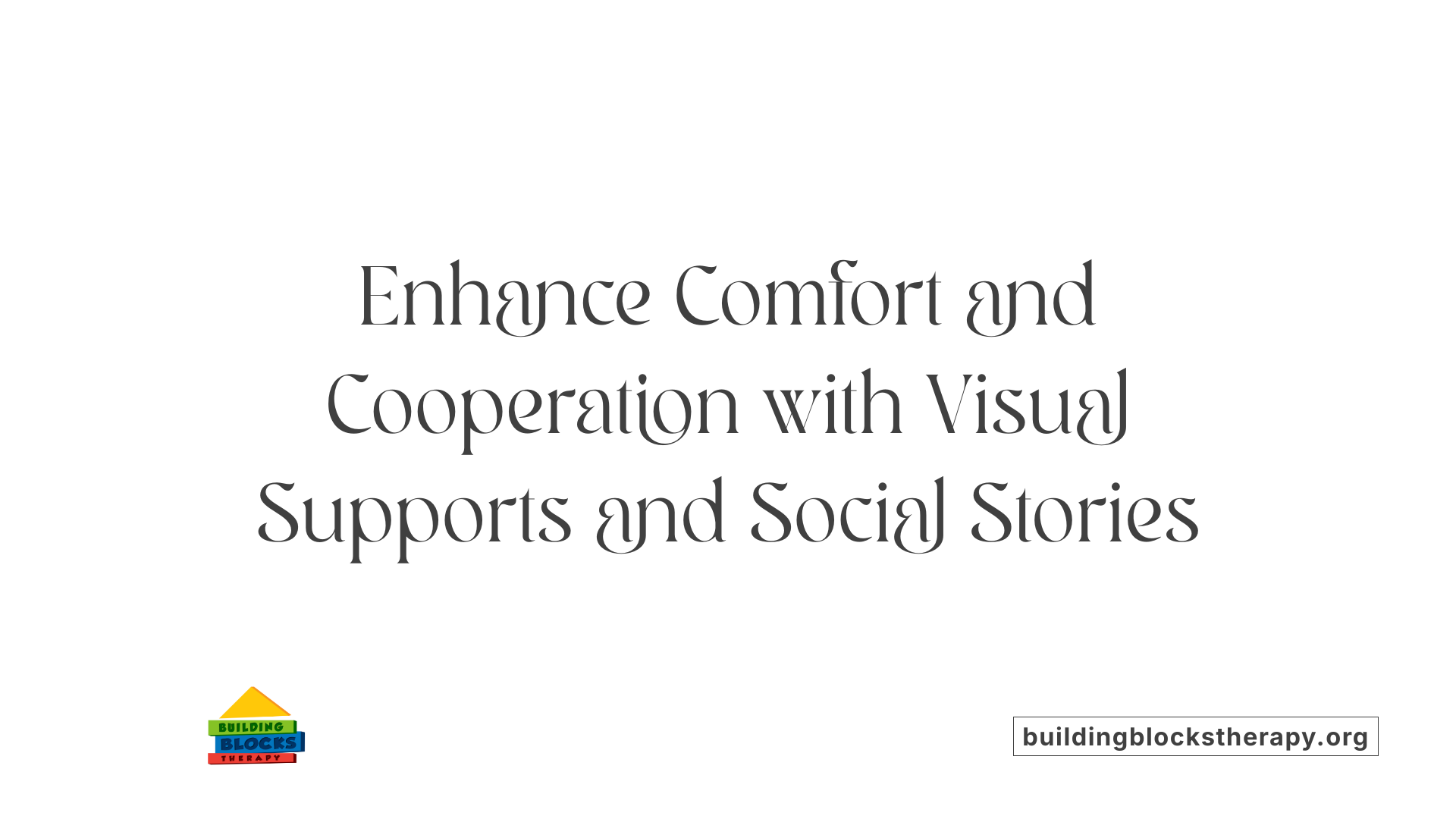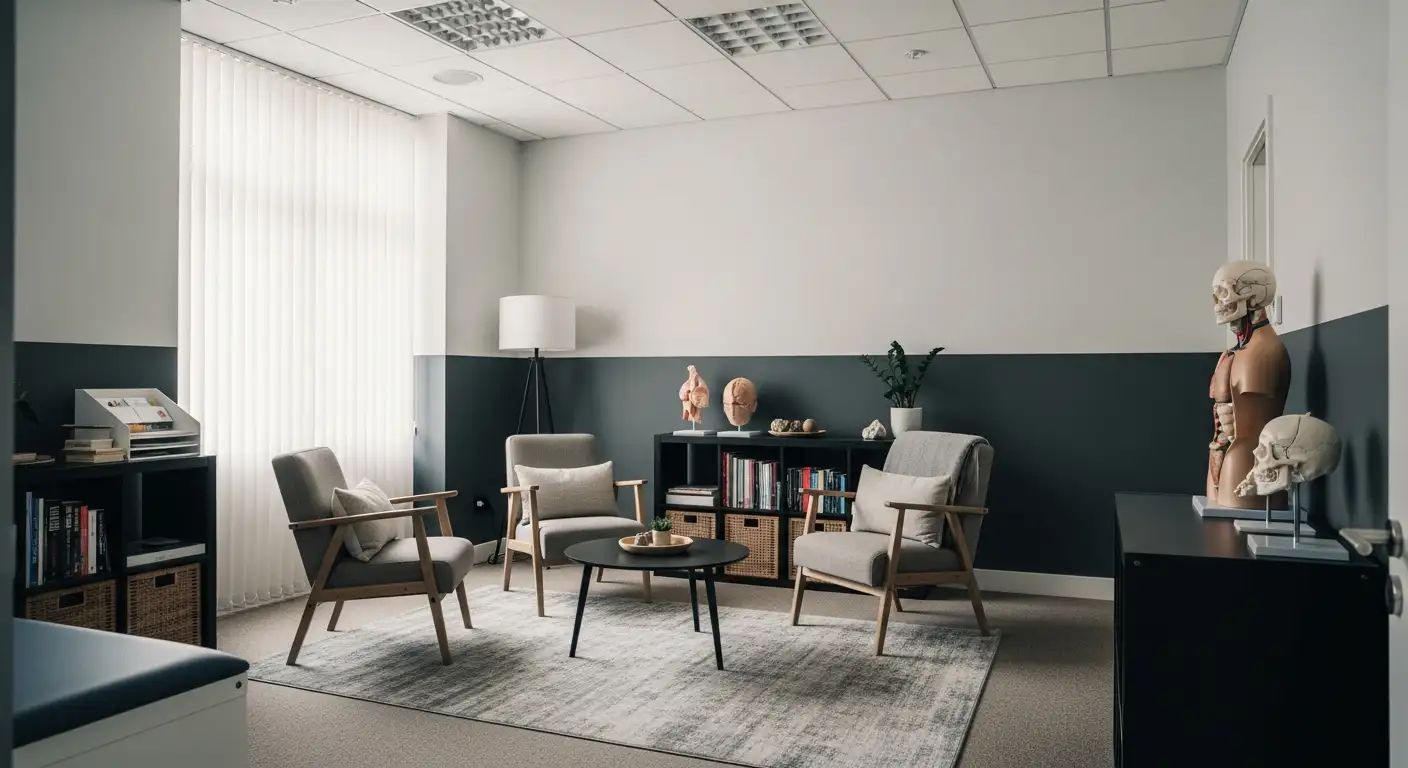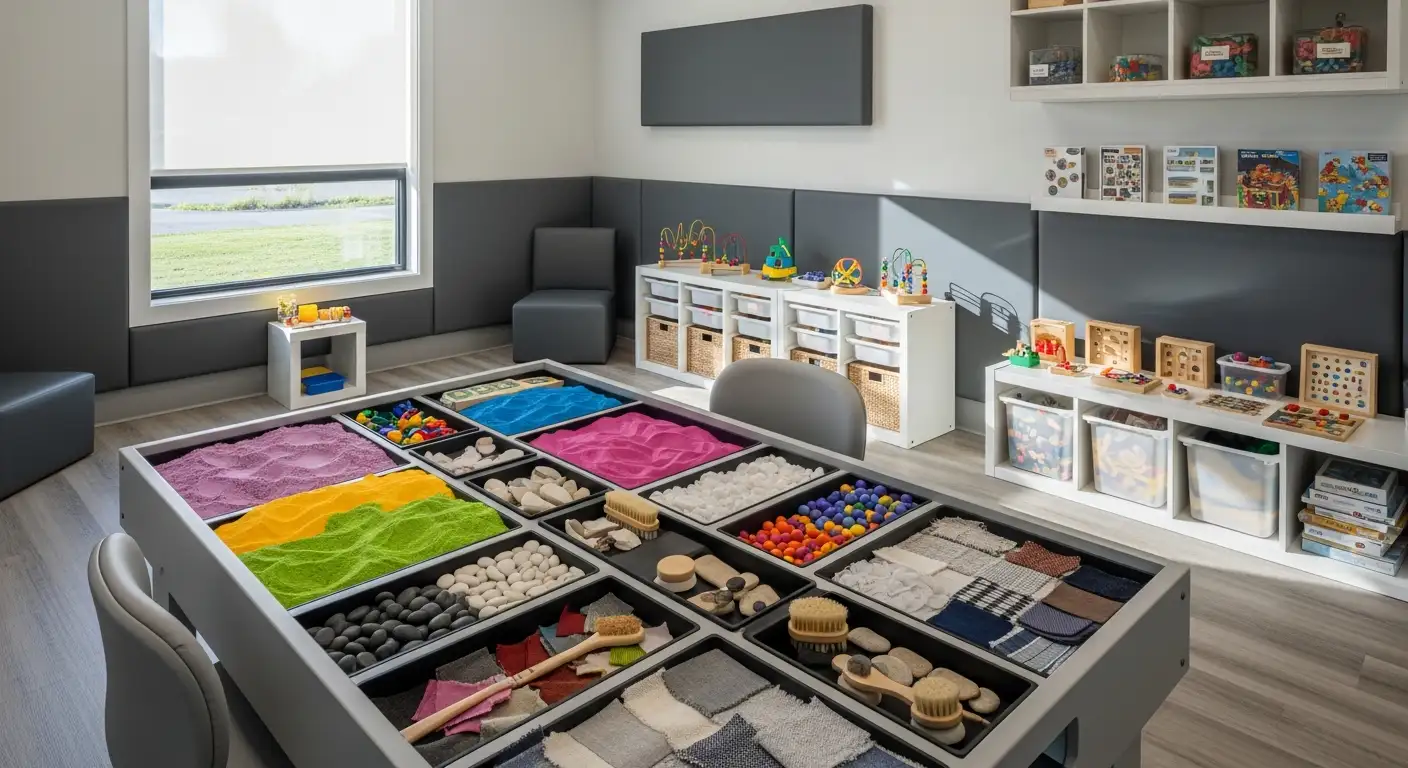Understanding the Importance of Preparation
Preparing children with autism for doctor visits is crucial in fostering positive healthcare experiences and reducing stress, anxiety, and behavioral challenges. With thoughtful planning, tailored strategies, and effective communication, caregivers can create a supportive environment that promotes cooperation and comfort during medical appointments.
Building Foundations with Visual Supports and Social Stories

How can visual supports help children with autism during medical visits?
Visual supports such as social stories, picture schedules, and visual aids are essential tools that help children with autism become familiar with their environment and procedures they will encounter during doctor visits. These tools provide a visual roadmap of what to expect, reducing feelings of fear or confusion. For example, a visual schedule might outline each step of a visit, from check-in to checkout, helping children understand the sequence of events. Social stories, which use pictures and simple words, explain specific procedures like blood draws or vaccinations in a friendly and predictable way.
Using these supports makes the unfamiliar seem more manageable. They allow children to see images depicting staff members, medical tools, and the exam room, which minimizes surprises and builds confidence. When children understand what will happen, they are often calmer and more cooperative during the visit.
Additionally, visual aids foster communication for children with limited speech or communication challenges. They enable children to express their feelings, needs, or ask questions, making the experience more interactive and less stressful.
How do social stories break down a medical visit into understandable steps?
Developing social stories tailored to the individual child helps demystify the medical visit by breaking it down into simple, understandable steps. For example, a social story might explain that “First, we will check in and say hello,” then “Next, the doctor or nurse will listen to my heartbeat,” followed by “I might get a shot, but I can hold my favorite toy or take deep breaths.”
These stories use clear, literal language combined with pictures or symbols to illustrate each part of the process. This predictability helps children anticipate and mentally prepare for what they will experience, reducing anxiety and resistance.
Creating social stories can be done with input from parents, caregivers, and healthcare providers to ensure all procedures are accurately represented. Repeated reading and practice at home can further familiarize the child with upcoming visits, turning uncertainty into familiarity.
When combined with role-playing or practice visits, social stories become powerful tools that empower children on the autism spectrum to approach healthcare with less fear and greater cooperation.
| Strategy | Description | Benefits |
|---|---|---|
| Visual Supports | Picture schedules, social stories, visual aids | Clarifies expectations, reduces anxiety |
| Practice Visits | Role-playing, familiarization sessions | Builds confidence, alleviates fears |
| Communication Aids | Communication devices, picture cards | Enhances understanding and expression |
| Sensory Planning | Noise-canceling headphones, comfort items | Manages sensory sensitivities |
Using a combination of these methods tailored to each child's needs can significantly improve their healthcare experience, making doctor visits less stressful and more predictable.
Effective Pre-Visit Planning and Environment Familiarization

How should parents plan and manage doctor visits for children with autism?
Preparing children with autism for doctor visits involves multiple strategies aimed at reducing anxiety and ensuring cooperation. Parents should begin by learning the layout of the medical facility through visits or phone calls, which helps the child get familiarized with the environment.
Doing practice visits or role-playing at home can significantly ease the child's transition to the real appointment. Bringing along favorite toys, comfort items, and communication devices, like picture boards or tablets, helps the child feel safe and supported.
Using visual aids, such as social stories with pictures and words, can clarify what will happen during the visit. These stories and visual schedules break down procedures into simple steps, making the experience predictable.
Scheduling appointments during less busy times, like early mornings or late afternoons, can decrease waiting time and overstimulation. It’s also beneficial to inform the healthcare provider in advance about the child's needs to allow for necessary accommodations.
During the visit itself, keep explanations clear and concrete, and offer choices when possible. Rewarding good behavior with stickers or small treats reinforces cooperation.
Post-visit, reviewing what happened and discussing the experience positively can reinforce a successful trip and prepare the child better for future visits.
By planning carefully and using familiarizing techniques, parents can transform what might be an overwhelming experience into a manageable and even positive one for children with autism.
What are some practical methods for pre-visit environment familiarization?
| Method | Description | Benefits |
|---|---|---|
| Facility tours | Visiting the office beforehand or doing virtual tours | Reduces fear of unknown environments |
| Practice visits | Role-playing or simulated visits at home | Builds confidence and familiarity |
| Use of videos | Showing videos of procedures or the office | Helps children understand what to expect |
| Visual schedules | Creating step-by-step visual plans | Promotes predictability and reduces anxiety |
| Social stories | Custom stories explaining the visit process | Clarifies procedures and expectations |
Utilizing these approaches tailored to the child's sensory and communication needs can significantly improve their comfort level and cooperation during medical visits.
Managing Sensory Needs and Reducing Stress During Appointments

How can anxiety and stress be reduced for children with autism during medical appointments?
Children with autism often experience heightened anxiety and stress during medical visits due to unfamiliar environments and sensory sensitivities. To help these children feel more comfortable, it is important to create routines that are predictable. Using visual supports like social stories and visual schedules can help children understand what to expect, reducing fears.
Adjusting the environment is also crucial. Dimming lights or reducing visual clutter, limiting noise exposure, and bringing familiar comfort items can significantly decrease sensory overload. Bringing a favorite toy, blanket, or sensory tool can provide reassurance during the appointment.
Pre-visit preparation includes discussing the upcoming visit with the child using social stories, role-playing different procedures, and familiarizing them with the setting through visits or videos. Sharing detailed information with healthcare providers beforehand can also make the experience smoother.
During the appointment, employing calming techniques such as deep pressure, deep breathing exercises, or visualization can help manage stress. Offering choices — such as when to sit or stand, or selecting a preferred distraction — empowers the child and reduces anxiety.
Finally, maintaining open communication with medical staff about the child’s specific needs, involving familiar caregivers, and scheduling appointments at less busy times may contribute to a more positive healthcare experience. These strategies together can make medical visits less intimidating and more manageable, fostering trust and cooperation.
Collaboration, Accommodations, and Post-Visit Reinforcement

What support options and practical advice are available for parents preparing children with autism for medical care?
Parents play a crucial role in ensuring their children with autism have positive healthcare experiences. One important step is to share detailed information about the child's needs with healthcare providers beforehand. This can include medical conditions, sensitivities, preferred communication methods, and effective calming techniques. Many healthcare facilities now encourage the development of personalized Autism Specific Care Plans, which outline strategies to manage the child's anxiety and behavioral challenges during visits.
Utilizing resources such as social stories, visual supports, and role-playing at home can make unfamiliar procedures more predictable and less frightening. These tools help children understand what to expect, reducing stress and resistance. Bringing comfort items like stuffed animals, sensory toys, or noise-canceling headphones can also create a more soothing environment.
Parents are advised to request accommodations directly from the healthcare team. Examples include scheduling no-wait or early morning appointments, providing a quiet room or low-stimulation environment, and using visual supports or social stories during the visit.
Effective communication with staff is essential. Clearly explaining the child's triggers and preferred coping methods allows for tailored interventions that improve cooperation. Enlisting the support of trusted caregivers or respite helpers can ease parental anxiety and ensure the child remains calm.
In addition to preparing for the visit, seeking ongoing community support can be beneficial. Parent groups, advocacy organizations, and social workers offer valuable emotional support and practical advice. Accessing specialized resources, such as visual aid kits or training programs, further enhances the child's comfort and cooperation.
Ultimately, a collaborative approach involving parents, healthcare providers, and community resources creates a more positive and less stressful healthcare experience for children with autism, fostering trust and better health outcomes.
Supporting Dental and Oral Health Care for Children with Autism

How can visual supports and social stories help prepare children with autism for dental visits?
Using visual tools is one of the most effective ways to prepare children with autism for dental appointments. Visual supports, such as picture schedules or social stories, break down the steps of a dental visit into understandable parts. These images or stories can include visits to the dentist, sitting in the chair, and even the sounds and sensations they might experience.
Social stories are customized narratives with pictures that explain what will happen in the procedure and highlight positive outcomes. They help children understand and anticipate each step, reducing anxiety and building confidence.
What accommodations and modifications create sensory-friendly environments?
Dental offices can adapt to make their environment more sensory-friendly. This includes adjusting lighting, reducing noise, and providing a calm, predictable setting. Desensitization—gradually exposing children to dental equipment and procedures—can help them become comfortable over time.
When necessary, sedation or anesthesia may be recommended, especially for children with significant sensory sensitivities or behavioral challenges. Some clinics also offer devices like noise-canceling headphones or sunglasses to help children manage sensory overloads.
How important is collaboration and caregiver education?
Educating caregivers about ongoing oral hygiene routines is vital. Establishing regular, tailored brushing and flossing routines can prevent dental issues before visits.
Collaborating with dental professionals experienced in working with children on the autism spectrum enhances the success of dental care. These practitioners are skilled in using behavior management techniques and sensory accommodations.
Occupational therapists and behavioral specialists can contribute strategies for sensory integration, desensitization, and behavior support.
What are best practices for managing dental care for children with autism?
Managing dental and oral health care for children with autism benefits from a personalized approach.
- Use visual supports and social stories for preparation.
- Create a sensory-friendly environment with adjustable lighting and noise reduction.
- Implement gradual desensitization or consider sedation if needed.
- Educate caregivers on maintaining oral hygiene routines tailored to the child's needs.
- Select dental providers with experience in autism and collaborate with specialists.
These combined strategies help ensure that children with autism receive effective, less stressful dental care, maintaining their oral health and overall well-being.
Making Medical Visits Manageable and Positive
With careful planning, open communication, and tailored interventions, preparing children with autism for doctor visits becomes a manageable task that can foster positive experiences and long-term health benefits. Empowering caregivers and healthcare providers to collaborate effectively ensures that children feel safe, understood, and respected throughout their healthcare journey, laying the foundation for lifelong positive interactions with medical environments.
References
- Autism and doctor visits
- PFA Tips: Preparing for a Visit to the Doctor's Office
- Visiting the Doctor—Autism Toolkit | THH Pediatrics | Germantown, MD
- [PDF] Preparing for a Medical Appointment for Autism Spectrum Disorder ...
- Prepare your child for a visit to the doctor
- Preparing a child with autism for a medical visit - Flourish
- Doctor Visit Tips for Autistic Children: ABA-Friendly Ways to Prepare
- Doctor Visits for Children with Autism and Other Developmental ...






